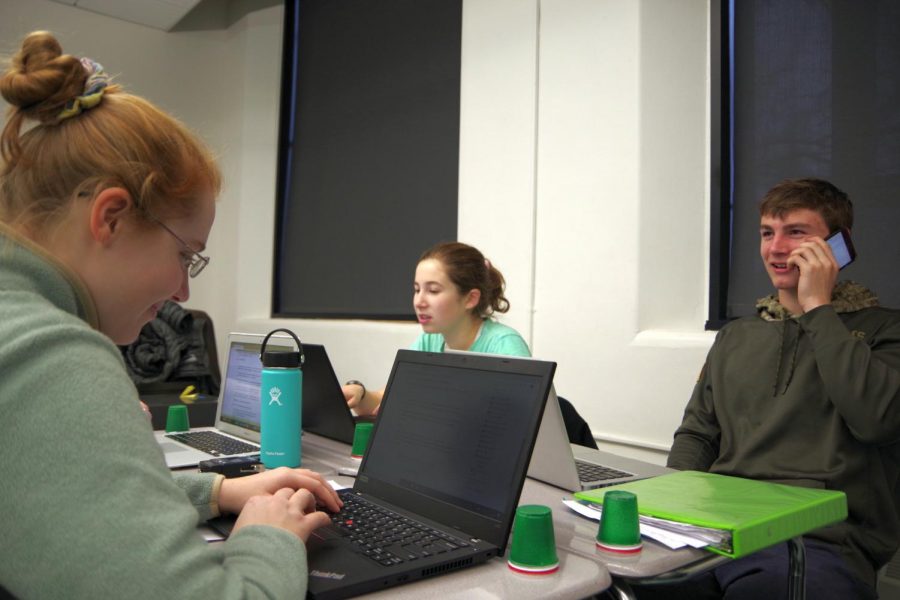National Gender Bias in STEM is not Escaped at CRLS
A Report on Gender Culture in STEM Classes at CRLS
AP Computer Science is a STEM-related class offered at CRLS.
November 29, 2018
According to a study conducted in 2016 by Pew Research, almost half (48%) of women working in STEM (science, technology, engineering, and mathematics) say gender discrimination is a major reason there are not more women in these fields.
The CRLS community does not escape the global reality that STEM fields are dominated by men. In a survey conducted at CRLS, of the students who are confident participating in their STEM class, only 39% were women. Many female students express that the majority male population affects their confidence.
Gender bias influences female interests. According to Ph.D. Catherine Hill, 29% of male freshmen in college, compared to 15% of female freshmen, plan on majoring in STEM. In CRLS AP Physics classes, 74% of students report that there are more boys than girls in their class. In calculus, 62.5% report more boys than girls. Girls in these classes report that this disproportionality impacts their level of participation and confidence in class.
A recent study by Lin Bian, a member of a Cornell Lab studying youth psychology, showed that five-year-olds are likely to say that girls are “really smart.” However, when they reach the age of six, children often associate intelligence with boys. Once girls reach the age of six, they are referred to as “hard workers” rather than “really smart.” This is despite the fact that, on average, girls outperform boys on tests in these subjects at school.
At a young age, children pick up notions of the relationship between gender and intelligence. Nationwide, as well as in the CRLS community, these notions contribute to the gender differences in self-confidence in science or math related classes.
Charlotte Keats, a current senior in AP Physics C, states that “boys talk a lot more in class and sometimes overpower the conversations.”
Similarly, Liliana Barkow, a junior in the same class, explains, “It can be hard to find confidence when a class is majority male, and boys dominate the conversation. However, after being in many STEM classes, I’ve learned to gain confidence despite that fact.”
In a survey conducted at CRLS, boys in these classes often describe their confidence levels as high. An anonymous male senior at CRLS who is in many STEM classes says, “I like to be loud, and I’m not afraid to get things wrong.” Another expresses, “I don’t care if I say stuff that sounds stupid.” On the other hand, female students indicated that even if they felt confident about the material, they often didn’t participate due to feeling nervous in the classroom.
Current physics teacher Elizabeth Hansel attended Connecticut College and was one of four physics majors in her class. “In almost every class besides my quantum physics class, I was the only girl,” she says. When asked how this affected her confidence, she said, “In the beginning, I was very nervous and intimidated, but once I was confident that I knew the material, I was empowered. I had to get over that it was okay to be the only girl.”
Ms. Hansel describes that the two people in her academic career who influenced her decision to pursue physics were her high school physics teacher and her first college professor, both of whom were female. She says that her career path would’ve been very different if she had not met these women: “[When I met them], I was like alright, I can do this.”
This piece also appears in our November 2018 print edition.











